Matador Network's Blog, page 1135
March 25, 2019
Best European music festivals

Not that you ever need an excuse to head to Europe during the summer other than it being Europe in the summer. But sometimes it’s nice to have an event to base your travels around and something to do other than fight the million other Americans who also thought this would be a good time to cross the pond. European music festivals offer the perfect centerpiece to a summer Eurotrip, a weekend where you can converse with people from all over the world and maybe catch Cardi B somewhere along the way. As summer creeps in and you start planning what to do once the weather gets warm, here are a dozen festivals you can plan your trip around.
1. Primavera Sound — May 30 – June 1 (Barcelona) and June 6-8 (Porto)
Barcelona, Spain, and Porto, Portugal
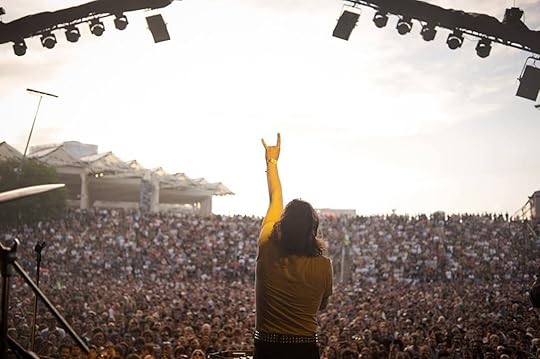
Photo: Primavera Sound/Facebook
Most two-weekend festivals limit themselves to one locale to simplify logistics. Not Primavera Sound, which gives you the chance to hit two of the Iberian Peninsula’s most popular summer destinations by going both weekends. The festival lineup gives us a little bit of everything, with Barcelona headliners including Cardi B, Tame Impala, and Solange, and Porto featuring J Balvin, Interpol, and Erykah Badu. Both festivals are held right near the water too, offering two of the prettiest festival settings on the continent.
2. Earth Garden — May 30 – June 19
Ta’Qali National Park, Malta
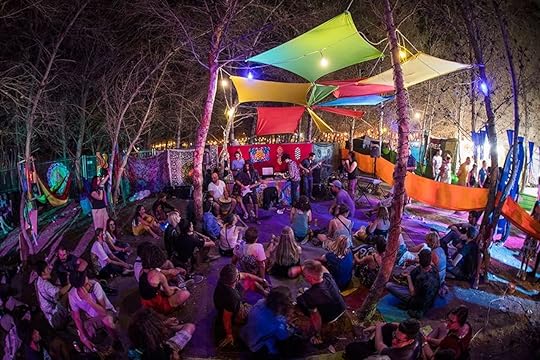
Photo: Earth Garden/Facebook
Though its recent tourism explosion sometimes leaves the island of Malta feeling oversaturated, an escape into the forest at Earth Garden allows you to appreciate the nature that brought so many people here in the first place. The three-day festival will have you camping in the middle of a national park, bouncing between healing sessions and concerts in an “Enchanted Forest.” The acts here might offer the best variety of any festival on the summer Euro circuit, with over 100 performers ranging from ska to funk to hip-hop. You won’t find huge-name headliners, but if you’re more into the experience than Insta-braggable names, this is the festival for you.
3. Sweden Rock Festival — June 5-8
Solvesborg, Sweden
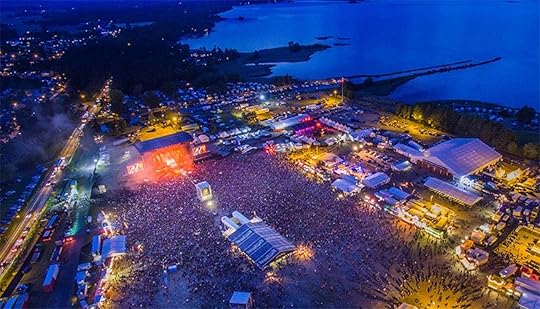
Photo: Sweden Rock Festival/Facebook
While European festivals tend to be long on electronic music and whatever’s killing the Top 40, the Sweden Rock Festival dates back to the early ‘90s and is a welcome change for those who love good old rock and roll. Europe’s largest rock fest is four days of classic rock, metal, and blues, and this year it’s headlined by KISS, ZZ Top, and Slayer. You’ll find the grounds meticulously maintained over the festival’s four days, as well as indoor flushing toilets and concession lines that move efficiently. Perfect, maybe, for the aging rock and roller who’s not so into chaos anymore.
4. Donauinselfest — June 21-23
Vienna, Austria

Photo: Donauinselfest/Facebook
For the budget Euro traveler, no festival tops Donauinselfest, the biggest and best free music festival in Europe. It draws over two million people over the weekend, making it the largest free outdoor festival in the world. The whole thing goes down on Donauinsel Island in the middle of the Danube River, where 10 stages and 18 tents offer over 600 hours of shows. This year’s lineup won’t be announced until mid-May, but last year Michael Bolton joined an extensive lineup of German and Austrian acts.
5. Glastonbury — June 26-30
Worthy Farm, England

Photo: Glastonbury Festival/Facebook
Though it might not have invented the field festival, Glastonbury has certainly perfected it over its nearly 50 years, drawing over 175,000 people for art, music, and pretty much anything else you can put on a stage. The UK’s largest music fest took last year off and returns with The Killers, The Cure, Janet Jackson, and Tame Impala leading the continent’s most impressive summer lineup. It’s still a camping festival — so while the music is first-rate, don’t go expecting a luxury experience. Still, Glastonbury’s a chance to get outside for a few days in the English countryside and enjoy its brief stint of nice weather.
6. Roskilde — June 29 – July 7
Roskilde, Denmark

Photo: Roskilde Festival/Facebook
Though a lot of festivals talk a big game about togetherness, community, saving the planet, and all that other happy stuff, Roskilde puts its money where its marketing mouth is. The festival is a non-profit organization in which workers are all volunteers, and 90 percent of the food served is organic. It’s also one of the oldest festivals in Europe, dating back to 1971, with genres all over the board. This year’s edition brings Bob Dylan to the stage along with Cardi B and Robert Plant. Hopefully all at the same time.
7. Balaton Sound — July 3-7
Lake Balaton, Hungary

Photo: Balaton Sound Official/Facebook
The people behind the massively popular Sziget festival founded this offshoot in 2007, an EDM-heavy fest held right on the shores of Lake Balaton. Balaton Sound is as close as you’re getting to a large-scale beach festival in Europe where campers set up on the sand and take the short walk over to the stages. This year the lineup delves a little further into hip-hop acts than in previous editions, where Future, Denzel Curry, and Yxng Bane join the likes of Armin Van Buuren and Tiesto.
8. Exit — July 4-7
Novi Sad, Serbia

Photo: Exit Festival/Facebook
When the Austrian Empire built the Petrovaradin Fortress during the 17th and 18th centuries, they probably never thought it would be filled with people listening to a guy named DJ Snake. But such is the world we live in today, where this historic fort hosts the annual Exit Festival, a largely EDM extravaganza held in one of the world’s most unique venues. The festival actually started as a student movement during the 1990s, fighting for peace and democracy after the fall of the iron curtain. But now it’s an excuse to sit out in the sunshine and enjoy music from Europe’s top DJs, with a handful of bands thrown in as well.
9. Ultra Europe — July 12-14
Split, Croatia
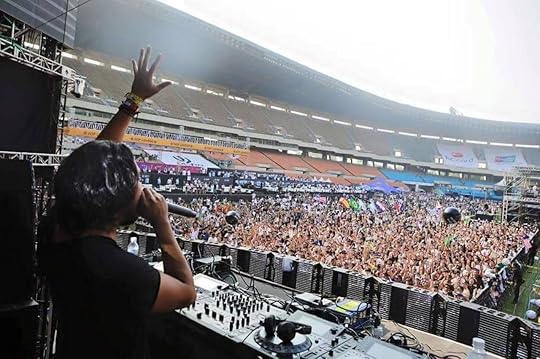
Photo: Ultra Europe/Facebook
The world’s biggest electronic music festival has now spread to nearly every continent — with the European edition, Ultra Europe, going down at Poljud Stadium in the seaside paradise of Split. The main festival is pretty self-contained within the stadium walls, where previous headliners have included Armin Van Buuren, Hardwell, and Axwell & Ingrosso. But perhaps the best part of the festival experience is outside Ultra itself, where you’ll find countless boat parties, beach parties, and other associated events that make this the best weekend of the year in Split.
10. Tomorrowland — July 19-28
Boom, Belgium

Photo: Tomorrowland/Facebook
Arguably the most famous European summer music festival, Tomorrowland draws tens of thousands of people over two weekends to the appropriately named town of Boom. The EDM-heavy fest is an onslaught of oversized art pieces and hard-pounding electro, with names like Carl Cox, Eric Prydz, Afrojack, and The Chainsmokers heading this year’s bill. Adjacent to the festival you’ll find Dreamville, the sprawling campground that offers everything from basic tents to full-on pop-up cabins, which turns into a secondary party of its own after the music’s over.
11. Sziget — August 7-13
Budapest, Hungary

Photo: Sziget Festival Official/Facebook
Sziget translated into English means “island,” a perfect descriptor of this mid-August tradition that separates you from the rest of the world both physically and mentally. Sure, Óbudai-sziget, or Old Buda Island, is just north of Budapest in the middle of the Danube River. But once you cross the bridge into the festival you’ll feel a world away, where over 1,000 performances, art exhibits, and performance pieces give it the feel of another dimension. Going for a full week can be intense, so you might be best advised to camp out for two or three days, based around the headliners you want to see. This year’s include Post Malone, Foo Fighters, and Ed Sheeran.
12. Iceland Airwaves — November 6-9
Reykjavik, Iceland
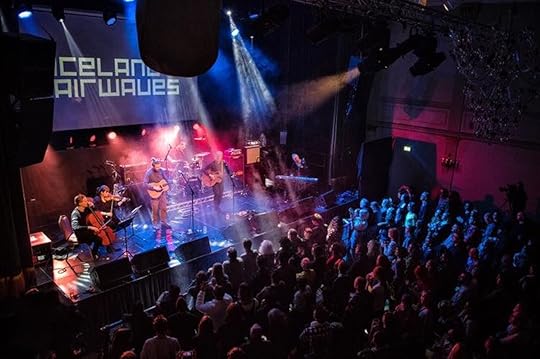
Photo: Iceland Airwaves/Facebook
Ok, so Iceland Airwaves doesn’t take place anywhere near the summer, but did you really want to go to Iceland when it was filled with busloads of midnight-sun-chasing tourists anyway? Of course not! Better to go when the city is overrun with people looking for hot new music that wasn’t on the summer’s festival circuit. Iceland Airwaves has become a little like the music equivalent of the Sundance Film Festival, where heretofore-unknown acts go to be discovered and distributed. Bands like Monsters of Men, Kaleo, and Florence and the Machine played here long before they were household names. Even if you don’t see the next big thing, you’ll still see plenty of Icelandic bands that may open your mind to a whole new genre. 

More like this: 16 awesome Canadian festivals you should check out this summer
The post 12 European music festivals you need to hit this summer appeared first on Matador Network.

Types of moonshine around the world

Illegal liquor is a lot like a good hole in the wall restaurant. No matter where you’re at, you can find it if you know the right people to ask.
Moonshine, as it’s known in the US, has a storied history as the liquid that changed the hills of Appalachia, built fortunes for Prohibition-era mobsters like Al Capone, and made a star out of Popcorn Sutton. It’s far from a stateside phenomenon, though. The tradition of fermenting and distilling whatever grain, sugar, or fruit is cheaply available has been happening around the world for basically as long as people have had the know how to do so.
The appeal for moonshine makers and drinkers is primarily price. Since it’s untaxed, it can be just a fraction of the cost of a bottle of alcohol purchased at a liquor store. However, also since it’s untaxed, it’s unregulated and can be improperly made or even laced with poisons. Still, it’s easy enough to find on your travels depending on where you go.
Unregulated liquor is about as much bound by borders as it is bound by the law. Which is to say, not at all. Many countries in the Balkans use some form of the word raki to describe their moonshine while a number of countries in Southeast Asia use the word arrack. Regardless of name, each region has its own slight variation on moonshining. From Ireland to Haiti and everywhere in between, these are the most famous moonshines made around the world you need to try — if you think you’re up for the challenge.
1. The Balkans: rakia (also spelled raki and rakija)
Like Italian grappa, raki is made with the solid fermenting skins, seeds, and stems of grapes after they’re pressed to make wine. Often it’s made with other fruits available in the area, like plums, pears, apples, and peaches. Sometimes it’s a mix of all of the above, but you’ll rarely know unless you ask. The taste varies by who makes it, but it loses the vast majority of the taste of the fruit its made from in the distillation process. The one rakia taste you’ll always pick up is a strong alcohol burn although spices or honey is sometimes used to cover that up. It’s served in small shot glasses and consumed in one go, often with food and always with other people.
Some of the places you can find raki are Albania, Bosnia and Herzegovina, Croatia, and Bulgaria. Sellers peddle their spirits on the street, encouraging the homemade status of their bottles of (mostly) clear liquor. It’s also found on store shelves with handwritten labels, but locals stick to the stuff they make at home or get from their neighbor.
2. Turkey: raki
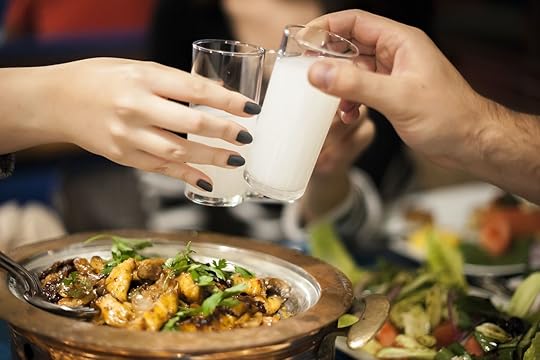
Photo: Nadir Keklik/Shutterstock
Yes, it has the same name as the raki above, but Turkish raki deserves a special mention. It’s more consistent than in the Balkans in that it’s always flavored with anise, giving it a similar taste to ouzo from Greece or pastis and absinthe from France. It’s earned a reputation as Turkey’s national drink and also goes by the name Lion’s Milk thanks to the opaque white color the spirit turns when a bit of water is added.
In Mexico, there’s a saying that goes por todo mal, mezcal, y por todo bien, tambien, which loosely translates to “for everything bad, there’s mezcal, and for everything good, there’s also mezcal.” The same goes for raki in Turkey. It opens up conversations when someone is feeling down and leads to dancing on tables during celebrations.
Raki is most often drunk in a chilled glass and is diluted with cold water. It has a strong anise flavor, and it’s always enjoyed with company during drinking sessions that can go all night. Letting all those drinks get to you is frowned upon, though, despite its strength. Thankfully, you’ll always find small plates of food on the table alongside the alcohol. Be sure to clink the bottom of your glass when you cheers — clinking the top means you think you’re better than the other person.
3. Haiti: clairin
Clairin is the traditional name for Haiti’s local rum-like spirit. It’s made from fresh sugar cane juice, unlike rum, which is most often made from molasses. The exact process and types of stills used vary from community to community, but it’s funkier than rum and has a sweet vegetal note to it. Each distiller uses whatever variety of sugar cane is nearby, and wild yeast ferments the pressed juice.
According to a company called Clairin that recently started exporting the drink to the US, there are more than 500 community-run stills in Haiti making local versions of clairin (exact numbers are hard to come by since it’s not government regulated). No single distiller makes enough to have any sort of dominance in the local clairin market, but it’s easy enough to find the hyperlocal spirit in clear plastic bottles. Thanks to the community-maker aspect, clairin has a real sense of place connected to the part of the island it’s made in.
4. Ireland: poitin
Pronounced puh-cheen, this Irish moonshine is the country’s true regional spirit. It’s made from whatever is available, which, depending on the area, can mean potatoes, barley, or sugar beets. The taste is influenced by whatever it’s made from but is often a touch sweet. The name comes from the traditional word for “small pot” in reference to the home-sized stills that true poitin is made in. Home distillation was pushed underground when it was outlawed by King Charles II in 1661 to keep distillers from tax evasion, and the all-out ban on the spirit category wasn’t corrected until 1997.
Irish whiskey stole the spotlight for much of the country’s long and illustrious distilling history, but clear, unaged poitin is starting to make a comeback thanks to a few moonshine-gone-legit companies selling bottles in the states, like Mad March Hare, Straw Boys Poitin, and Glendalough.
5. Georgia: chacha
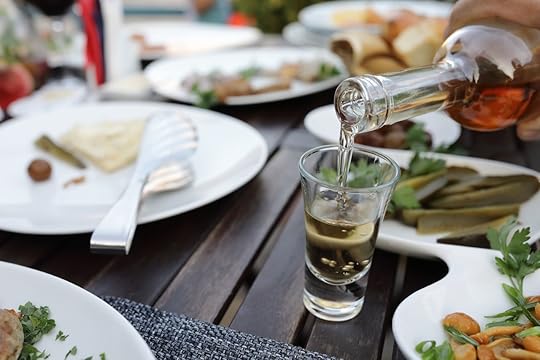
Photo: Chubykin Arkady/Shutterstock
The country of Georgia may be known for being one of the oldest wine regions in the world, but the drink of the people is chacha. The fiery spirit is similar to raki and Italian grappa in that it’s made with the grape pomace leftover from winemaking, and it’s often high in alcohol and unrefined.
You don’t need to visit any type of speakeasy to get a taste of chacha; all you need to do is step into the country. It’s given to visitors by locals eager to share their traditions and culture, and it’s served at pretty much every bar and restaurant, where small shots poured from unmarked bottles are passed around. More often than not these bottles come from a local distiller rather than any government-regulated industry. A toastmaster leads the drinking during meals, and it’s considered rude to not partake — regardless of how many toasts the leader wants to make.
6. India and Southeast Asia: arrack
Arrack was once a catch-all term for spirits from Southeast Asia, but the word has been refined down to referring primarily to a distilled beverage made from coconut palm sap or sugar. By some accounts, it’s the oldest spirit in the world, and it was the base spirit for punches and cocktails when sailors passed through modern-day India, Sri Lanka, and Indonesia (where it’s often spelled arak) during the Age of Exploration. Colonization and subsequent taxation pushed arrack to the fringes of the black market, and it further solidified its position as a homemade spirit after World War II.
It’s impossible to ignore how big of an impact arrack had on the way people drink liquor today. It was more than likely the ingredient used in the first punches and cocktails before it was replaced by the more readily available rum. Unregulated arrack is cheap and easy to find, but it’s often cut with poisons, and it’s a gamble if you don’t know your source. 

More like this: The one drink you need to know before visiting the country of Georgia
The post 6 white-hot moonshines from around the world worth trying appeared first on Matador Network.

King Tutankhamun exhibit in Paris

After the discovery of the tomb of King Tutankhamun in 1922, the subsequent story of the King Tut’s curse turned the 1967 exhibition in the Petit Palais in Paris into one of the biggest archaeological sensations of the 20th century, drawing 1.2 million visitors and sparking public interest in Egyptian archaeology. This year, the treasures of Tutankhamun are on display in Paris once again, in a rare exhibition at the Grande Halle de la Villette. The “Treasures of the Golden Pharaoh” which opened in Los Angeles in March 2018, is now in Paris until September, under the name “Tutankhamun, Pharaoh’s Treasures.” It’s the exhibition’s only stop in continental Europe.
More than 150 objects from Tutankhamun’s tomb are set to be displayed — many of which have never before left Egypt. The treasures include an assortment of jewelry that were found on the Pharaoh’s body, his gold funeral mask, gold-plated wooden bed, and many other artifacts, including the statue of Amun protecting Tutankhamum, lent by the Louvre for this historic exhibit. The exhibition’s website invites visitors to “come discover many personal belongings of the young sovereign [that] accompanied him in the two worlds that are life and death.”

Photo: Expo Toutankhamon Paris/Facebook

Photo: Expo Toutankhamon Paris/Facebook
The event is being highly publicized all over Paris, and over 150,000 tickets were sold on March 22, one day before the opening of the event.
The exhibition will travel to another eight countries around the world, ending in 2022, one hundred years after the tomb’s discovery, when it will be on permanent display at the Egyptian Grand Museum that is currently under construction. The Paris show will run through September 15, and tickets are between $25 and $30. 
H/T: France 24

More like this: 7 underrated sites in Egypt worth visiting, according to an archaeologist
The post Dive deep into King Tutankhamun’s treasures at this huge Paris exhibit appeared first on Matador Network.

Flight accidentally lands country

A plane touching down on a runway is one of the best feelings for a traveler, but touching down at the wrong airport might be one of the worst. On Monday, a British Airways flight departed from London City Airport and landed safely in Edinburgh. The only problem was that the destination was supposed to be Düsseldorf, Germany. The 500-mile mistake in the flight plan supposedly occurred due to incorrectly submitted paperwork. Passengers only realized the mistake when the plane announcement said, “Welcome to Edinburgh.”
According to Sophie Cooke, a 24-year-old management consultant who flies the route often, the crew only realized the mistake when she asked a flight attendant if they were joking. She told the BBC that, “The pilot said he had no idea how it had happened. He said it had never happened before and that the crew was trying to work out what we could do.”
The plane did eventually bring the passengers to Düsseldorf, but not before it sat on the Edinburgh tarmac for two and a half hours with a blocked toilet and no snacks.
According to The Guardian, passengers will receive financial compensation of about $280. A British Airways spokesperson said that they were further investigating the cause of the incident and apologized for the mistake. 
H/T: BBC News

More like this: The world’s safest airlines of 2019
The post Flight to Düsseldorf accidentally lands in Edinburgh, 500 miles in the wrong direction appeared first on Matador Network.

Mermaid swimming classes at Disney

Sparkly and colorful mermaid tails are everywhere these days (even in fancy hotels), so it’s not surprising that Disney, creator of the most famous mermaid in the world, wants to get in on the fun. At select Walt Disney World resorts in Florida, Disney will offer guests the opportunity to learn how to swim like a mermaid. As long as you’re four years old or older, you’ll be able to channel your inner Ariel from The Little Mermaid. Classes will last one hour, with students given a special tail and taught how to move like a mermaid in a pool.
The classes will be hosted by a Florida-based swimming school called the Mermaid Academy, who will also make its swimming fins available for purchase on site.
The mermaid swimming classes are being offered at Disney’s Art of Animation Resort, Disney’s Caribbean Beach Resort, and Disney’s Yacht and Beach Club resorts. Classes cost $50 per person, and you can book by calling 407-WDW-PLAY. 
H/T: Lonely Planet

More like this: The 7 strangest theme parks around the world
The post Learn to swim like Ariel, the Little Mermaid, at Disney World appeared first on Matador Network.

Sings of springs in Wisconsin
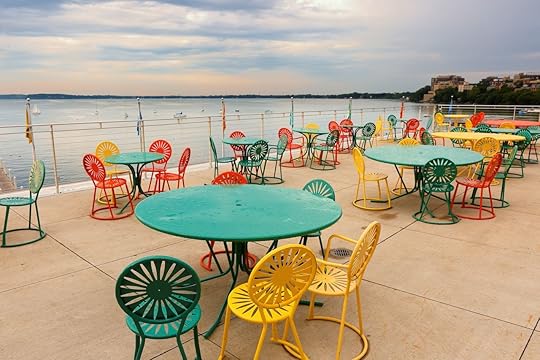
Temperatures are rising, flowers are blooming, and Wisconsinites don’t need a calendar to know spring has sprung. From bare midriffs to farm-fresh produce, here are 11 other signs it’s spring in Wisconsin.
1. Everyone is outside.
Every outdoor patio in town is packed with people. Sunbathers lay out around the lakes. Bikers and runners fill every sidewalk. Even if it’s still a little chilly outside, you tough it out in a T-shirt. Whether it’s sharing a pitcher with friends at the University of Wisconsin Student Union Terrace, hiking Devil’s Lake, or going for a stroll in the woods up north, if the sun is out, so are you.
2. Baseball season starts.
The excitement of opening day at Miller Park entices even the rare Wisconsinite who isn’t a sports enthusiast. Any excuse to drink beer and eat brats outside with your friends is a good thing. If you’re lucky, your one friend who plans everything already has a party bus lined up.
3. The snow melts, turning a beautiful white wonderland into a brown mess of dirty snow.
The mountains of snow present in every parking lot are melting, spreading a soggy black slush everywhere you step. Your shoes are hopeless victims, as is your front door entryway. You’re mopping the front hall every day just to keep the grime away.
4. You don’t have to thaw the car in the morning.
But you do have to wash your car every other day to get off all the sludgy road grime that inevitably finds its way onto your windshield. It’s still better than waking up a half hour earlier every morning to start the car, though.
5. You open the windows in your house to let the fresh air in.
The windows are open and the heat is off for the first time in six months. And let’s not forget the financial freedom that comes with a lower monthly heating bill. We all know the cost of staying warm through a Wisconsin winter is no joke.
6. The farmers market starts.
The best part of spring is doing everything outside — including your grocery shopping. With a huge farmers market in downtown Madison and dozens more in towns across the state, it’s easy to buy everything you need for the week — especially squeaky fresh cheese curds — while enjoying the springtime sun.
7. You need to wear a coat the week after you finally packed it away.
We’ve had sunny and 60 degrees weather for weeks now, but there is always that random day in April where it’s 20 and you’re cursing yourself for thinking it’d stay spring until summer.
8. The smell of grilled brats and burgers wafts from every street.
We grocery shop outside, we cook outside, and we eat outside. At least one person on your street is grilling up a delicious meaty meal on any given day, and chances are you’re invited.
9. Convertibles start appearing on the roads, even though it’s only 50 degrees.
When winter takes up half the year, Wisconsin’s convertible owners take every opportunity to put the top down.
10. Ice fishing shacks are off the lakes, and the real adventurous activities is water skiing in wetsuits.
The ice fishing shack is packed up and stored until next winter, and boats have shown up in their place. It doesn’t matter if it’s still sweater weather — sunshine and lakes mean it’s time for boating season. 

More like this: 13 signs you’ve become culturally Wisconsinite
The post 10 signs it’s spring in Wisconsin appeared first on Matador Network.

March 22, 2019
The best islands to visit in Croatia
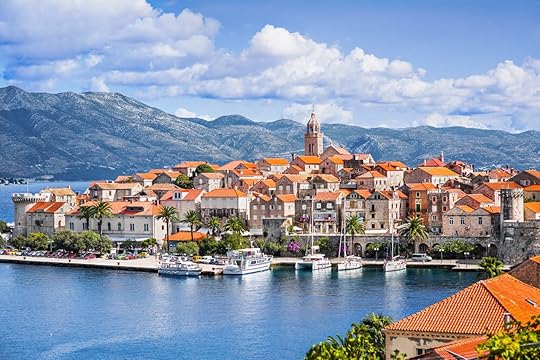
Croatia is becoming an increasingly popular summer destination for those wanting an affordable European beach vacation. With so many islands, you can choose the kind of experiences you want for your vacation — whether for relaxation, nightlife, outdoor activities, or food and wine. Each island has a rich heritage and its own distinctive cuisine, as well as activities suited to its unique geography. Departure for each of these four islands is from the coastal port city of Split, which has its own rich heritage, UNESCO listed sites, and great ferry network.
1. Brač — Climb a mountain or just watch the boats sail by.
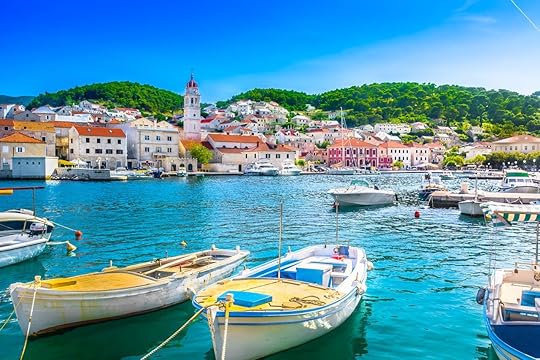
Photo: Dreamer4787/Shutterstock
Just a short ferry ride from Split is the mountainous island of Brač, one of the largest and most accessible of the Adriatic islands. You can visit it by ferry as a day trip from Split or stay for a week or longer to enjoy the striking landscape and multiple outdoor activities. In fact, one of the most appealing aspects of Brač is the sheer range of possible experiences.
You can relax on the beach in one of the many coves, hike through pine forests, or enjoy incredible views after summiting the 2,552-foot-high Vidova Gora, the highest peak on the Adriatic Islands. For a laid-back and more off-the-beaten-path vacation, stay on the north side of the island in Supetar, where a ferry from Split arrives all year.
Alternatively, the island’s more touristy south side has more in the way of beaches, restaurants, bars, and accommodations. A great place to base yourself in the south is the seaside town of Bol. In the summer, a fast catamaran ferry connects Bol to Split; at other times of year, you can reach it via a bus from the ferry terminal in Supetar.
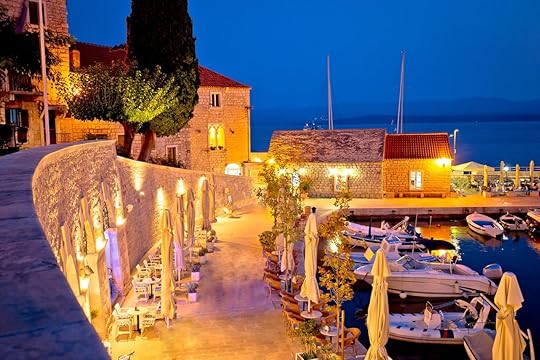
Photo: xbrchx/Shutterstock
For an upmarket vacation in Bol, you could stay at beach resorts like Bluesun Elaphusa or Zlatni Rat Beach Resort. Even if you stay in the heart of town, be sure to walk the short mile along a well-maintained path from town to Zlatni Rat beach, also known as the “Golden Horn.” It has an unusually shaped pebble beach, water sports, bars, and cafes.
A fun, and more economical, lodging option in Bol is to stay in an apartment, so you can visit the local markets, bursting with seasonal produce, and cook. Bol also has several excellent seafood and pizza restaurants. In any case, spend an afternoon walking along the promenade and follow that by wine tasting at the local Ština winery. Ština is gloriously located on the waterfront, making it an ideal evening perch to sip wine made from grapes grown on the island and taste the local olive oil, sheep cheese, and olives, all while you watch the yachts come and go.
2. Hvar — Scooter from quiet beach coves to chic bars.

Photo: Xenia Chowaniec/Shutterstock
The most cosmopolitan and popular of the Croatian islands is Hvar. Chic hotels, upmarket restaurants, and fashionable waterside bars adorn the coastline, onto which is usually attached a luxury private yacht — or 10. If you love kicking back with an espresso (the Martini version) and celebrity-watching, this is the island for you.
Most visitors aim for picture-perfect Hvar Town in the southeast. It’s the center for fine dining and nightlife and has a variety of accommodations, which fill quickly in summer. Under the protective gaze of a medieval hilltop fortress, the town is a maze of old stone houses and pedestrianized alleyways, which eventually lead down to a modern harbor.
For a slower pace of beach life, head to the town of Jelsa on the north coast. There, you can find an affordable old stone apartment with a sea view and sit back and soak up the warmth. You could while away entire afternoons in Jelsa just wandering the alleyways and sampling the local wines; a visit to the Tomić or Duboković cellars is a must. If you visit the latter, be sure to ask for a taste of the incredible bold red, Medvjedica.
Afterward, settle in for a meal at a konoba, a small inn like Konoba Turan for local, traditional dishes such as octopus peka, where the dish is usually slow-cooked for 24 hours. The next morning when you wake to yet another day of sunshine, nearby Mina beach is a great spot for a dip in the ocean.
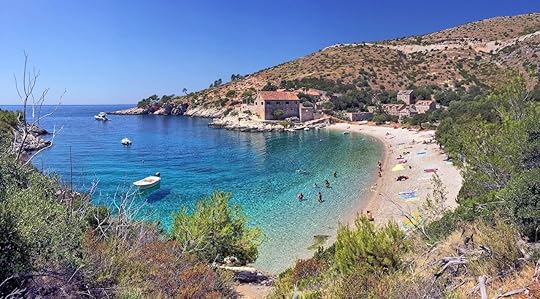
Photo: Jerry U/Shutterstock
Regardless of where you stay, since the island is almost always sunny, one of the most fun ways to explore Hvar is by scooter. The island’s interior is hilly and rocky, hiding old abandoned settlements, fields of Hvar’s famous lavender, and hillside vineyards; the coastline, meanwhile, is peppered with pretty beach coves and sleepy fishing villages. Five miles from Hvar Town in a picturesque cove is secluded Dubovica beach; it’s a lovely spot to while away the day, perhaps with a visit to the beach bar and restaurant to try out the local cheese and fresh seafood.
Hvar Town can be reached directly from Split by a Jadrolinija catamaran or ferry, and you can get to peaceful Jelsa by a Jadrolinija ferry via Brač. A discussion of the glamorous island of Hvar also seems like the appropriate place to add an indulgent private yacht charter into the mix of transport options. The Adriatic islands are situated closely together and well-suited to island hopping for the ultimate vacation treat.
3. Korčula — Cycle past olive groves and vineyards.
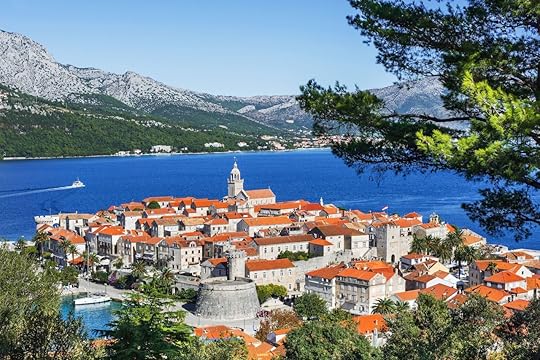
Photo: Kite_rin/Shutterstock
Korčula is a little more time consuming to reach by ferry compared to other islands, but it’s worth the effort for its unique variation of island life and chill vibes. According to local legend, Korčula is the birthplace of famous explorer Marco Polo. Although the Venetians may disagree, the alleged site of his birth is a popular visitor attraction.
Korcula town is the most versatile place to base yourself — and the prettiest with its Dubrovnik-esque medieval stone fortifications, palm trees, and peaceful swimming spots in easy walking distance. As in Brač, you can get a more local experience by staying in an apartment. Apartments Nina, for example, offers great hospitality and a rooftop terrace for breakfast overlooking the Adriatic. For a special occasion, splurge on a night in an opulent apartment in an 18th-century bishop’s palace within the old town. Regardless of where you stay, if you are in Korčula any time from mid-June to September, check out the town’s traditional Sword Dance Festival.
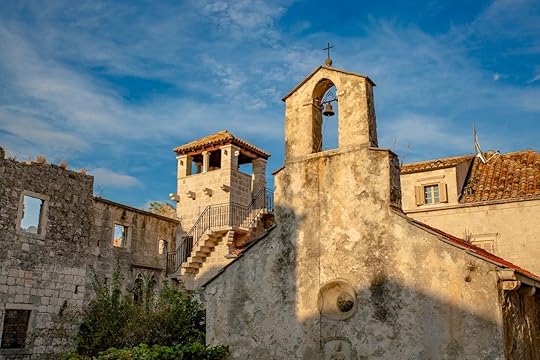
Photo: jack1986/Shutterstock
Korčula has amazing little pizzerias and seafood restaurants — and some really scenic bike-riding and hiking opportunities. Rent a bike from Korčula town for a great day trip out to Račišce, a charming, sleepy little village nestled around a bay on the north coast. The eight-mile ride (each way) takes you along the coast past picturesque olive groves and vineyards. When you arrive in Račišce, settle in at Konoba Vala. Savor a well-earned glass of white wine — try the local variety, Pošip — and grilled fish as you look out onto the sea.
The simplest way to reach Korčula is by the Krilo ferry, which departs Split twice a day, or Jadrolinija catamaran, which travels each afternoon from Split to Hvar and then on to Korčula town. Alternatively, take the ferry in the opposite direction, leaving from Dubrovnik in the morning. There are other Jadrolinija ferry connections, but they arrive in other ports on the island. That said, arriving at the pretty port town of Vela Luka on the far west of the island isn’t so bad, and you can connect to Korčula town on a scenic bus trip.
4. Šolta — Skip the crowds and explore sleepy fishing villages.

Photo: Dziewul/Shutterstock
A small, peaceful, and underrated island with a slower pace of life, Šolta is only nine nautical miles from Split. This tranquil island is known for its sleepy fishing villages, narrow lanes, and quiet beaches, and it’s the island to pick if you’re looking for a serene retreat well away from the crowds where relaxation is the number one aim.
The island is forested and not very mountainous and is therefore great for exploring on foot or by bike, with plenty of marked paths and maps available from tourist information. Islanders are proud of their produce and want you to love it as much as they do. There are a few family-run agrotourism ventures inland where you can stay overnight. You can also just call in to sample local produce such as olives, wine, and even honey. Visit Tvrdic Honey to learn about beekeeping, tour the hives and taste the honey, or visit Kastelanac to try local produce and wine.

Photo: Dziewul/Shutterstock
The village of Maslinica on the west coast has the feel of an unspoiled fishing village. It’s a fabulous town to be based in, with its fresh seafood and five-star hotel situated in a 300-year-old castle. Its beaches are quite rocky, and there’s a gorgeous and unusual view of a little archipelago of islets just out to shore.
The larger village of Stomorska has a pretty harbor and more budget-friendly apartments with panoramic ocean views. It also has a greater range of restaurants, including Konoba Nevera, where you should order the Dalmatian special black risotto.
The great thing about Šolta is that there’s always a quiet beach within easy walking distance, no matter which village you stay in. You can get to Šolta in an hour by car ferry or in 30 minutes by catamaran. Public transport links on the island itself are relatively infrequent, but there are buses connecting the port town of Rogač through to other villages. 

More like this: The best islands you can day trip to from Athens
The post The 4 Croatian islands you have to visit this summer appeared first on Matador Network.

Where to eat at Hong Kong airport

The hardest part about deciding where to eat in the Hong Kong International Airport is choosing whether you want to get your food before going through security or after. Whichever you choose, there are outposts of Michelin-starred restaurants, luxury chains, and quality grab-and-go options. There are also plenty of fast food chains, but it’s too easy to avoid those and get one last taste of Hong Kong cuisine (as well as award-winning food from around China and Japan) before taking off.
These are the best places to eat at the Hong Kong International Airport, whether you’re in the non-restricted, pre-security area or already through and on your way to your gate. Quick note: Be sure to eat before security if you’re departing from Terminal 2.
Pre-security Terminal 1
Crystal Jade La Mian Xiao Long Bao: Specializing in Sichuan and Shanghainese dishes like xiao long baos (soup dumplings), hand-pulled noodles, and hot and sour soup. It’s sit-down, but the food comes out delicious and fast if you’re in a rush.
Maxim’s Jade Garden: Cantonese restaurant with local Guangdong food with options like dim sum, roasted goose, and crispy pork. Where to go when you want to leave behind the hustle and bustle of the normal airport environment for a solid meal.
Ho Hung Kee: Started in 1946 as a street stall wonton shop in Hong Kong. It’s now included in the Michelin guide. Get the dim sum and noodles.
Tonkotsu 8: An outlet that’s part of the Japanese Mitsui-Mirada Noodles Factory. The ramen is the obvious draw, but there’s also dumplings and fried rice.
Post-security Terminal 1
Putien: The food here is like what you’ll find in Fujian Province, and the name comes from a coastal town. Putien started as a street stall in 2000 and has expanded into a 50-plus chain without losing the qualities that made it so appealing in the first place. One of the original outposts has been featured in Singapore’s Michelin Guide from 2016 on.
Beef & Liberty: Burger spot with both gourmet options and options that’ll satisfy your need for a simple, down-home burger. It’s also one of the better bars in the airport, serving beer and cocktails.
Caviar House & Prunier: There are plenty of times when grab-and-go is best at the airports, but sometimes you arrive early or get stuck thanks to an extremely delayed flight. It’s times like the latter when you might feel the need for some luxury. Caviar House is a chain that sources its food from Bordeaux and Switzerland.
Baikohken: A quick takeaway ramen shop. The original opened in 1969 and won a best-ramen award. You don’t have to stick to just ramen (although no one would blame you if you did) as there are other options like fried chicken and dumplings.
Pre-security Terminal 2
Hung’s Delicacies: The original got a Michelin star three years in a row. Goose, duck, and noodles are the go-to options here.
Sorabol Korean Cuisine: A restaurant that puts quite a fair amount of care into its sourcing and ingredients. Seafood and vegetables are shipped in from Korea weekly, and the barbecue is always a solid option.
TamJai SamGor: Food options from Yunan Province like mixian (rice noodle broth), pork belly, and fried chicken. 

More like this: 15 ways to save money on your trip to Hong Kong
The post Where to eat and drink at Hong Kong International Airport appeared first on Matador Network.

Best late-night bars in Brooklyn

Manhattan is usually most people’s go-to when it comes to New York City nightlife. While you should definitely experience everything the island borough has to offer, from wine bars to dives to scenic rooftops, it’s worth getting out of the city for a night or two to experience the nightlife elsewhere. Brooklyn has gained a lot of popularity over the last few years and is most commonly known to visitors for being a hipster haven. While that’s true to a degree, and though it has led to the arrival of cool new hangout spots, there was a lively community there long before the hipsters moved in, meaning you can find everything from local dives to live music venues. And in true fashion for the city that never sleeps, many of them are open late. Here’s our list of the best places for a late-night drink in Brooklyn.
1. The Rookery
View this post on InstagramA post shared by The Rookery (@therookerybar) on Feb 8, 2019 at 6:18pm PST
A trip to Bushwick is worth it for a visit to the Rookery, where you’ll feel chill gastropub vibes and be able to have a conversation without yelling to be heard. There’s a long, oval-shaped bar in the middle of it all, with booth seating on the right and table seating on the left. If you need some fresh air, there’s an outdoor beer garden, as well. Drinks here are decently priced and actually taste good — none of that haphazard drink mixing you did in college. The food is a fusion of British and West Indian, with the kitchen staying open late enough to help curb those munchies. There’s also a number of board games available, but maybe avoid drunk monopoly unless you want to end some friendships.
Where: 425 Troutman St, Brooklyn, NY 11237
2. Sunshine Laundromat and Pinball
Sunshine Laundromat was actually just a laundromat at one point, but when the building’s owner collaborated with the pinball-loving laundromat’s proprietor, a speakeasy-like establishment was born. Past the working machines, you’ll come to an odd stack of washers, which is actually a door that leads to a beer and pinball heaven. Over 20 different classic pinball machines are scattered throughout the back room, and a long beer list matches it. There are also other quirky touches, like a vending machine that sells pregnancy tests and band-aids, and a fortune-telling chimpanzee in a booth.
Where: 860 Manhattan Ave, Brooklyn, NY 11222
3. Franklin Park
Near the Brooklyn Botanic Garden, Franklin Park is a laid-back bar to visit whether you’re in a group or flying solo. But it’s not so relaxed that it’s overly tame, however, as it still gets quite lively on weekend nights. Indoors are two separate spaces: the main bar room, complete with a fireplace and an attached game room, and a lounge area. And, as with many Brooklyn spots, there’s an outdoor patio for when it gets warmer out. Beers are cheap, usually ranging between $4 and $6, and the menu is comprised of mouth-watering burgers, hotdogs, fries, and shakes all under $12.
Where: 618 St John’s Pl, Brooklyn, NY 11238
4. Skinny Dennis
View this post on InstagramA post shared by Skinnydennis (@skinnydennis) on May 24, 2018 at 11:49am PDT
Skinny Dennis is a honky-tonk dive bar if there ever was one, and it’s dedicated to the musician of the same name, mentioned in the song “LA Freeway” by Guy Clark. There are 18 rotating beers on tap, with spirits and mixed drinks also on offer. Some of the mixes are things you wouldn’t have thought would go together, like the Dr. G, made with Guinness and Dr. Pepper; others, like the alcoholic coffee slushie, are sure to please the young at heart. It does get packed in here, so get there early if you want seats, and there’s usually live music every night of the week. It’s also located near the East River State Park, which offers fantastic views of the Manhattan skyline.
Where: 152 Metropolitan Ave, Brooklyn, NY 11211
5. Our Wicked Lady
Everyone loves a good rooftop, especially one that’s reasonably priced, and Brooklyn’s got one of the best at Our Wicked Lady. The rooftop is enclosed by fencing, so it’s not so much a scenic viewpoint, but you do get the feeling of being on top of it all. This spacious spot is equal parts bar and artistic hub, offering studio and rehearsal space to any artist who needs it, so you might catch anything from an artist in the middle of their creative process and musicians rehearsing to a gallery and a live show.
Where: 153 Morgan Ave, Brooklyn, NY 11206
6. Brooklyn Public House
Somewhere between a saloon and a gastropub, Brooklyn Public House is well known for its long list of delicious food, from bar snacks like steak nachos to main entrees like bangers and mash. You’ll have no problem finding a space to post up in, but that doesn’t mean you’ll lack in the crowd department. It’s close to the Barclays Center, so if you find yourself attending a concert or sports game there, you won’t have to worry about where to go afterwards. All the really closeby places will be packed with people, so heading to BPH just a few extra blocks away will be your best bet for a good time with just the right amount of people.
Where: 247 Dekalb Avenue, Brooklyn, NY 11205
7. St. Mazie Bar and Supper Club
View this post on InstagramA post shared by St. Mazie (@stmazie) on Mar 1, 2019 at 6:33am PST
Several rooms make up St. Mazie: the main floor where there’s live music playing most nights, a garden lounge in the back, and a cellar that houses the supper club dining area. It’s cozy, busy, and spacious all in one neat package that’s perfect for a late-night drink (or several). On the food side, it’s known for its oysters and its namesake burger, made with prime meat (a veggie patty is available), egg, pineapple, caramelized onions, and beets. Cocktails will cost you $13, but we recommend springing for some of the absinthe on offer.
Where: 345 Grand Street, Brooklyn, NY 11211 

More like this: 9 best bars for a late-night drink in Manhattan
The post The 7 best bars for a late-night drink in Brooklyn appeared first on Matador Network.

Alcohol rules while flying

The TSA is strict when it comes to liquids. Anyone who’s flown in the last decade knows all liquids must be in 3.4-ounce or less sized bottles. A mini bottle of alcohol, conveniently, is around 1.7 ounces. Which has led plenty of budget-conscious fliers to wonder if it’s legal to bring and drink your own alcohol on a flight to avoid paying for the expensive in-flight drinks.
While you can certainly get your minis through security, drinking them is another issue entirely. Federal Aviation Administration (FAA) regulations state that “No person may drink any alcoholic beverage aboard an aircraft unless the certificate holder operating the aircraft has served that beverage to him.”
Frontier, Alaska Airlines, and others directed me to these guidelines when asked about personal alcohol consumption mid-flight. Southwest noted that the regulation is listed in a disclaimer on its drink menu that reads, “In accordance with FAA regulations, customers are prohibited from consuming alcoholic beverages onboard that are not served by Southwest Airlines.”
Yet for close readers of the regulation, there appears to be a loophole. It states that passengers can only drink alcohol that’s served to them by someone from the airline. This led to reports of JetBlue being a BYOB airline so long as you handed your drink to the flight attendant to open it for you. This way, the line of thinking goes, the flight attendant can still make sure a passenger doesn’t over consume. Only, according to the FAA, it’s not as simple as asking nicely.
The FAA Modernization and Reform Act of 2012 has a section called “Enhanced Training For Flight Attendants.” Alcohol safety is a big part of said enhanced training “because most passengers do not understand the amplified effects of alcohol in a pressurized aircraft at cruising altitude,” and flight attendants need to manage anyone who appears intoxicated. Not being in control of the alcohol a passenger is drinking is an easy way to lose the ability to manage them.
In short, this means that passengers are not allowed to consume alcohol that they personally brought aboard the plane on any flight required to follow FAA regulations. Think of the plane like a bar with a roving bar cart. You can’t drink your own alcohol in a bar, and you can’t do it on a plane, either (even if you have those little plane-friendly cocktail kits).
“Bottom line is alcohol must be provided and served by the air carrier,” Ian Gregor, communications manager for the FAA Pacific Division, tells Matador in an email. “We don’t allow BYOB in air carrier operations.” 

More like this: The best (and worst) drinks to order on an airplane
The post Can you drink your own alcohol on a flight? appeared first on Matador Network.

Matador Network's Blog
- Matador Network's profile
- 6 followers



